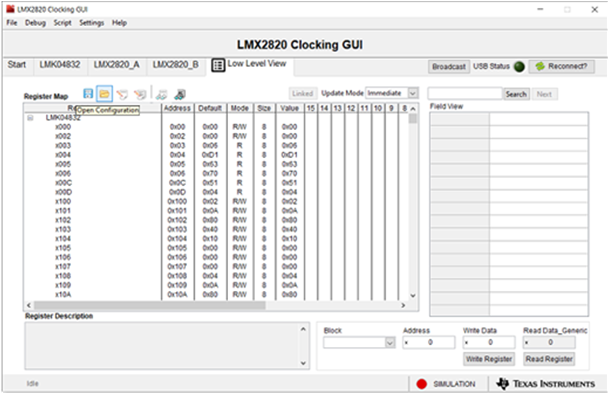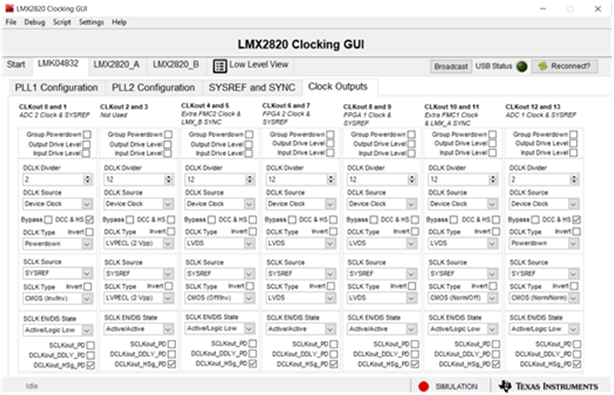ZHCU772 December 2021
- 说明
- 资源
- 特性
- 应用
- 5
- 1System Overview
- 2Hardware, Software, Testing Requirements, and Test Results
- 3Design and Documentation Support
- 4About the Author
- 5Acknowledgement
2.1.2.5 Clocking Board Programming Sequence
All devices in the clocking board are configured by loading the configuration files in the low-level view page.
- Load the LMK04832_2949.12M_184.32MREF_SYSREF_SYNC.cfg file to program onboard LMK04832 to generate FPGA REF clock and SYSREFs
- Load the LMX2820_A_B_8847.36M_184.32MREF_SYSREF_REPT_SYNC.cfg file to generate synchronized device clocks at 8847.36 MHz and SYSREF in repeater mode from LMX2820s
- Once all other boards are programmed, turn off the SYSREF to AFE7950EVM by setting Active/Logic Low for SDCLK1 and SDCLK13 from the clocking board
 Figure 2-4 LMX2820 Clocking GUI
Figure 2-4 LMX2820 Clocking GUI Figure 2-5 LMX2820 Clocking GUI With
LMK04832 Tab
Figure 2-5 LMX2820 Clocking GUI With
LMK04832 Tab